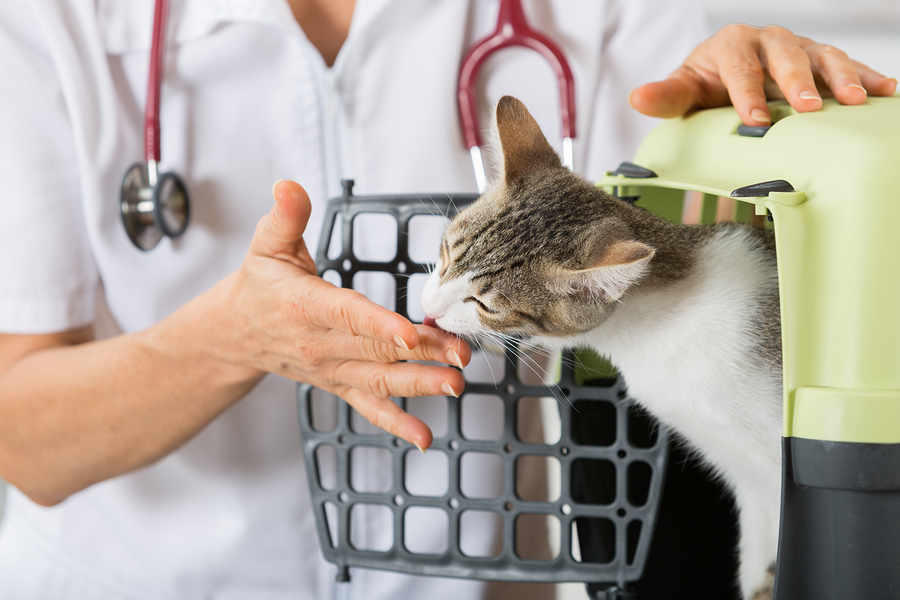Rachel Lees, RVT, KPA CTP, VTS (Behavior)Cats are often considered a more independent, self-sufficient species compared to dogs, largely because they do not need humans to take them outside to eliminate. Most cats successfully learn to eliminate in the home by going to a litter box.
Nonetheless, feline elimination issues are one of the biggest behavioral problems clients bring to veterinarians. Often, the problem develops because human preferences regarding litter box location and type don’t match up with the desires of their feline companions.
As veterinary professionals, we must feel comfortable teaching clients what their cat wants from an elimination station. This article will review cat preferences regarding desirable locations, litter box styles, litter types, and more. This information can not only help the cat who is eliminating outside the box but can also help new kitten owners be successful from the start in setting up their new cat’s environment.
Litter Box Design and Location
Place litter boxes in safe, low-traffic areas but right off a high traffic area, so it is easily accessible. Keep them away from loud appliances such as washers and dryers, furnaces, dishwashers, air conditioners, or toilets. All these items have the potential to frighten the cat with unexpected sounds, interrupting the normal elimination pattern. An example of a safe, quiet location is a spare bedroom or bathroom that is rarely entered.
Many commercial products also offer “hidden” locations where cats can eliminate, disguised as planters or side tables, for instance. Although this hides the litter box from the human, it may also place it in a higher traffic location. Keep this in mind when giving recommendations on litter box placement. Everyone prefers privacy for elimination, even cats.
Litter box design preferences differ from cat to cat and human to human. Most cats prefer an open litter box. Most cat owners prefer a covered litter box. Covered litter boxes may trap odors and make the human environment smell better but for those reasons they may not be as desirable for the cat. If boxes are not cleaned regularly, the odor may be aversive to them.
Most commercial open litter boxes are too small for the average cat. The size of the litter box should be one and a half times the length of the cat’s body. Most veterinary behavior teams recommend using storage containers, Tupperware bins, dog litter boxes, or cement mixing pans. It is also important to find out if litter box sides are low enough for the cat to jump in without injury or pain. Using a litter box that cleans itself is typically not recommended as the sounds and machinery can scare the cat.
Litter Preferences
Many different types of litters are on the market: scented, unscented, clumping, non-clumping, wheat, newspaper, sawdust, pine, and more. A study by veterinary behaviorist Jacqueline C. Neilson DVM, DACVB, found that cats generally prefer unscented clumping litter beneath their paws. And although scented litters may be more desirable to humans, cats often disdain them. Cats are far more sensitive to odors than humans. Keep in mind as well that crystal-like litter can feel unpleasant to sensitive paws. When the cat eliminates the crystals can “pop,” causing a startling sound. Recommend giving cats the most preferable substrate—a plain, unscented litter—to set them up for success.
Since Flushing Isn’t an Option: Cleaning Tips
Litter boxes should be scooped once or twice daily. Cats prefer a clean location to eliminate. When boxes are not cleaned at least once daily, this can cause an aversion as the cat may not want to step and eliminate in a litter box filled with yesterday’s urine clumps and stool piles. Most humans would not desire this either.
To make boxes as attractive as possible, they should be emptied, cleaned with a mild, unscented detergent, and refilled with fresh litter at least once a month. Avoid cleaning the box with strongly scented cleanser.
Recommendations for Multi-Cat Homes
Design, location, cleaning, and substrate preferences are identical, but in homes with more than one cat, owners should provide one box for each cat, plus one extra. Place boxes on separate floors and rooms of the home to prevent one cat from blocking access to a box.
Keep in mind as well that using covered boxes in multi-cat homes can create increased anxiety if one cat is a stalker. If victim cats venture into the box to eliminate, they cannot see if the stalker cat is creeping up on them. If there is low-level aggression between the cats, and the victim cat is attacked when coming out of the box, the experience can create litter box aversion. For this reason, open litter boxes should be recommended in multi-cat homes.
Remember: It’s a cat’s world. We just live in it!
Author’s Note: Elimination out of the box is not always a behavioral concern and can very well be a medical cry for help. It is always important to rule out a medical condition before blaming behavior. Every patient who eliminates out of the box should be examined by a veterinarian and medically worked up (CBC/Chem/UA) before specific recommendations are made.
This article was reviewed/edited by board-certified veterinary behaviorist Dr. Kenneth Martin and/or veterinary technician specialist in behavior Debbie Martin, LVT.
Rachel Lees, a Level 3 Fear Free Certified Professional, is a veterinary technician specialist in behavior, a KPA certified training partner, and lead veterinary behavior technician at The Behavior Clinic in Olmsted Falls, Ohio. She loves helping people create and maintain a strong human-animal bond.
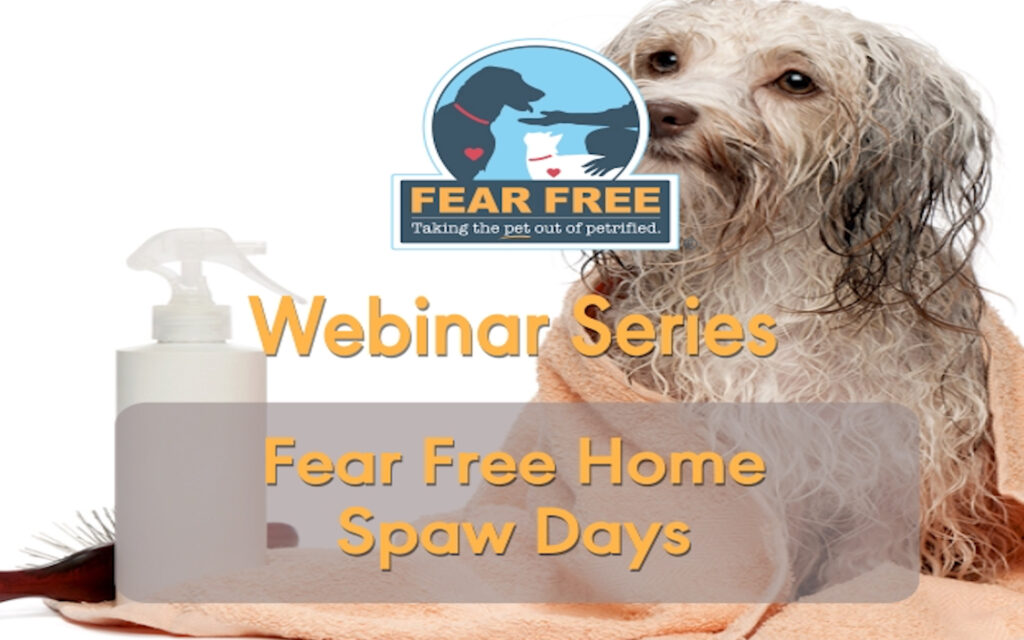
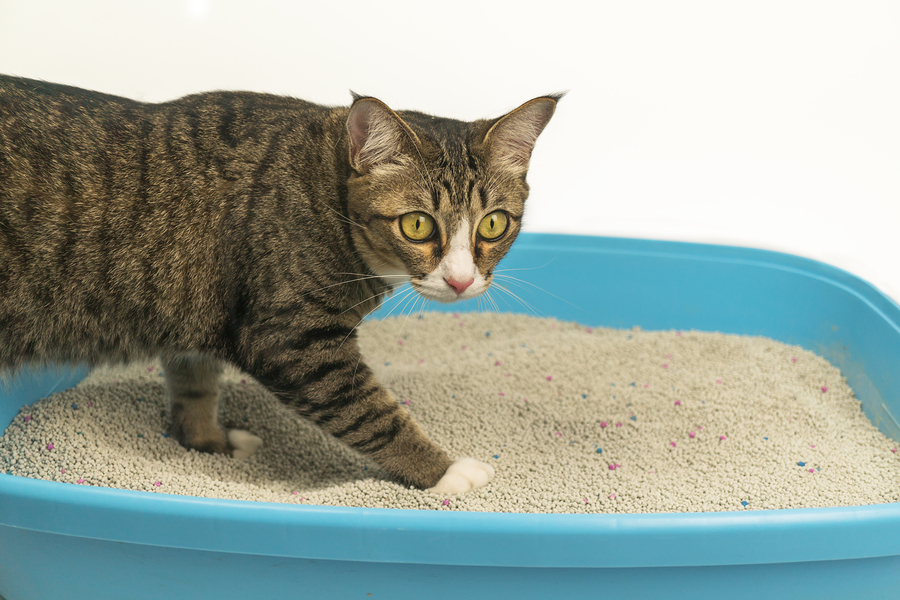

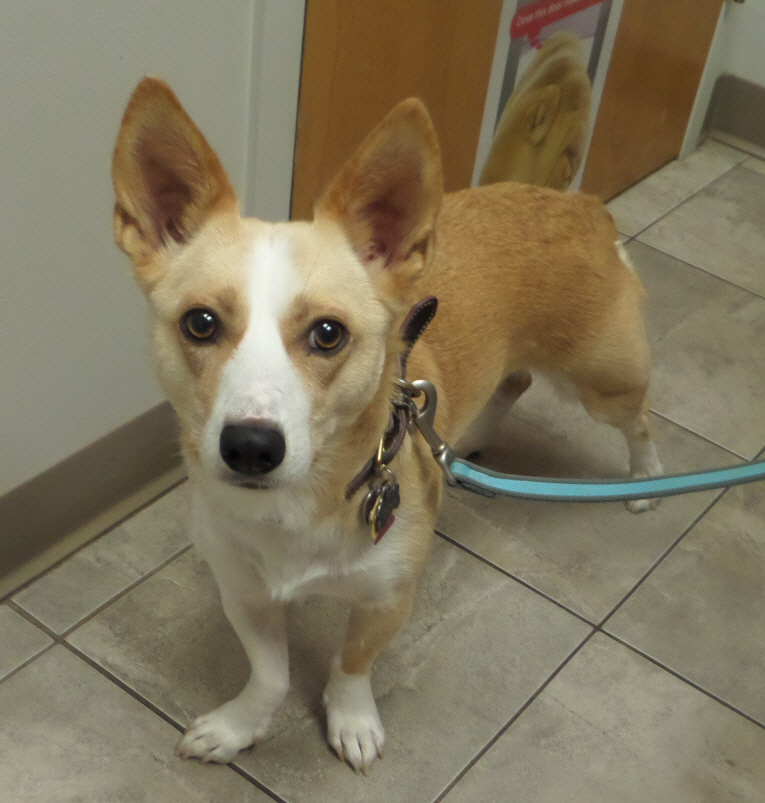
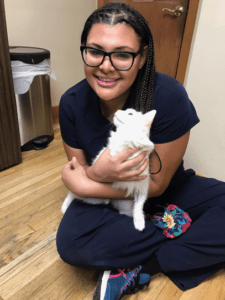 veterinarian, Dianicia Kirton, DVM, whose Hopkinton, Massachusetts, practice is Fear Free certified, has been recommending that Sushi get her teeth cleaned but my sister was hesitant. The veterinarian addressed each of her concerns until eventually she was ready to move forward. A few weeks later, Sushi’s mom brought her in for the teeth cleaning, although she was still nervous and reluctant. The veterinarian and staff were very calming and worked on Sushi quickly. Everything went well, and Sushi was her normal, happy self afterward. My sister told the vet that she felt like she had been “Fear Freed,” and Dr. Kirton responded, “Yes, it’s as much for the people as it is for the animals.” My sister was happy with the whole experience and thankful to have found a practice that uses these methods!
veterinarian, Dianicia Kirton, DVM, whose Hopkinton, Massachusetts, practice is Fear Free certified, has been recommending that Sushi get her teeth cleaned but my sister was hesitant. The veterinarian addressed each of her concerns until eventually she was ready to move forward. A few weeks later, Sushi’s mom brought her in for the teeth cleaning, although she was still nervous and reluctant. The veterinarian and staff were very calming and worked on Sushi quickly. Everything went well, and Sushi was her normal, happy self afterward. My sister told the vet that she felt like she had been “Fear Freed,” and Dr. Kirton responded, “Yes, it’s as much for the people as it is for the animals.” My sister was happy with the whole experience and thankful to have found a practice that uses these methods! Pennie, a 7-year-old 78-pound Chesapeake Bay Retriever, had never had a full veterinary exam after her puppy vaccines because she bared her teeth and growled at veterinary team members at every clinic she was taken to. When she was brought to us, we implemented several Fear Free strategies, spending 45 minutes building her trust both outside the clinic and in the exam room. We were able to get her to stand on the lift table and receive vaccinations without being muzzled. On her third visit, we were able to lift her lips and examine her teeth. Now she boards with us routinely and is a big part of our veterinary practice family. Implementing these Fear Free tools has changed Pennie’s life and her owner is now able to better understand and relate to her dog, making it much safer to take her for walks and be groomed.
Pennie, a 7-year-old 78-pound Chesapeake Bay Retriever, had never had a full veterinary exam after her puppy vaccines because she bared her teeth and growled at veterinary team members at every clinic she was taken to. When she was brought to us, we implemented several Fear Free strategies, spending 45 minutes building her trust both outside the clinic and in the exam room. We were able to get her to stand on the lift table and receive vaccinations without being muzzled. On her third visit, we were able to lift her lips and examine her teeth. Now she boards with us routinely and is a big part of our veterinary practice family. Implementing these Fear Free tools has changed Pennie’s life and her owner is now able to better understand and relate to her dog, making it much safer to take her for walks and be groomed.
 We love our Fear Free veterinary hospital. At TLC, there are separate areas for cats and dogs. We took our two cats in last week, and the exam room was comfortable, with shelves for the cats to explore. A board listed the names of the technician and veterinarian who would be seeing the cats, so we knew who would be treating them. The technician who went over the intake information was sweet and tender with Lucy and Lilu. An email ahead of time alerted us that a new veterinarian would be seeing the cats. She was calm and handled the cats gently. Both cats were calm throughout the visit—although Lucy didn’t much like having her teeth examined—and when they got home they came out of their carriers calmly and went about their day. Lilu was her regular self and didn’t hide away as she has on some prior visits to other clinics. The clinic called the next day to see how the cats reacted to their vaccines and visit. We feel we have found our new clinic!
We love our Fear Free veterinary hospital. At TLC, there are separate areas for cats and dogs. We took our two cats in last week, and the exam room was comfortable, with shelves for the cats to explore. A board listed the names of the technician and veterinarian who would be seeing the cats, so we knew who would be treating them. The technician who went over the intake information was sweet and tender with Lucy and Lilu. An email ahead of time alerted us that a new veterinarian would be seeing the cats. She was calm and handled the cats gently. Both cats were calm throughout the visit—although Lucy didn’t much like having her teeth examined—and when they got home they came out of their carriers calmly and went about their day. Lilu was her regular self and didn’t hide away as she has on some prior visits to other clinics. The clinic called the next day to see how the cats reacted to their vaccines and visit. We feel we have found our new clinic! reactive. During her first appointment she was quite nervous, but with the help of some peanut butter as a distraction she allowed us to pet her. We decided that that was a win and that Zola would benefit from coming back another time after having gabapentin to help calm her. At her next visit, Zola was visibly more relaxed, and we had a Kong full of peanut butter ready for her. Knowing that Zola did better with minimal restraint we kept her focused on the Kong and were able to do a full exam, vaccinations and a blood draw. Zola’s owners had never seen her so relaxed at the vet and she has since come back willing and happy to see us.
reactive. During her first appointment she was quite nervous, but with the help of some peanut butter as a distraction she allowed us to pet her. We decided that that was a win and that Zola would benefit from coming back another time after having gabapentin to help calm her. At her next visit, Zola was visibly more relaxed, and we had a Kong full of peanut butter ready for her. Knowing that Zola did better with minimal restraint we kept her focused on the Kong and were able to do a full exam, vaccinations and a blood draw. Zola’s owners had never seen her so relaxed at the vet and she has since come back willing and happy to see us.
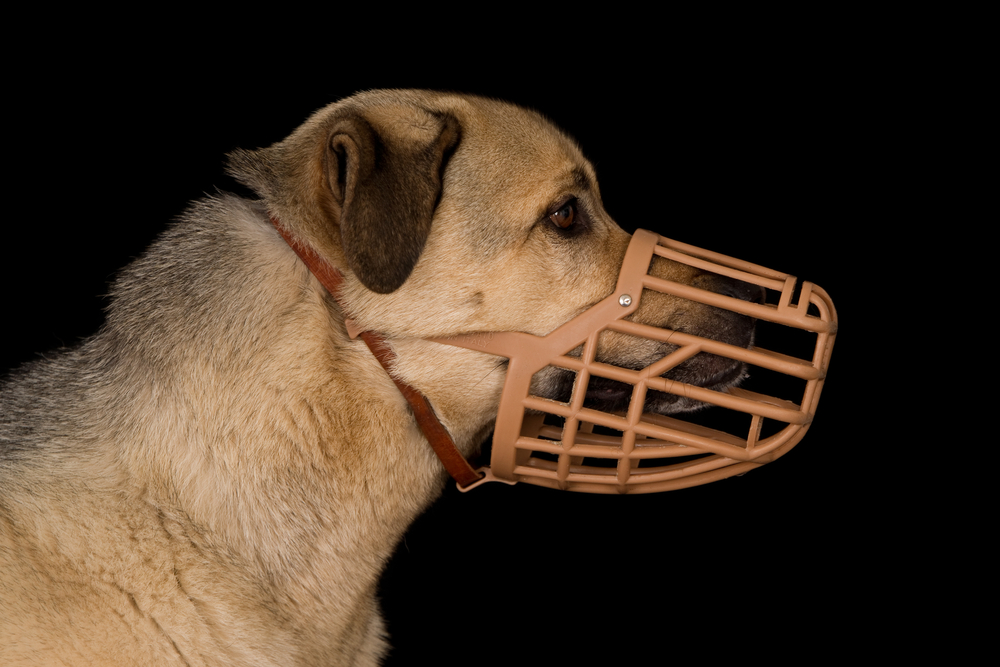
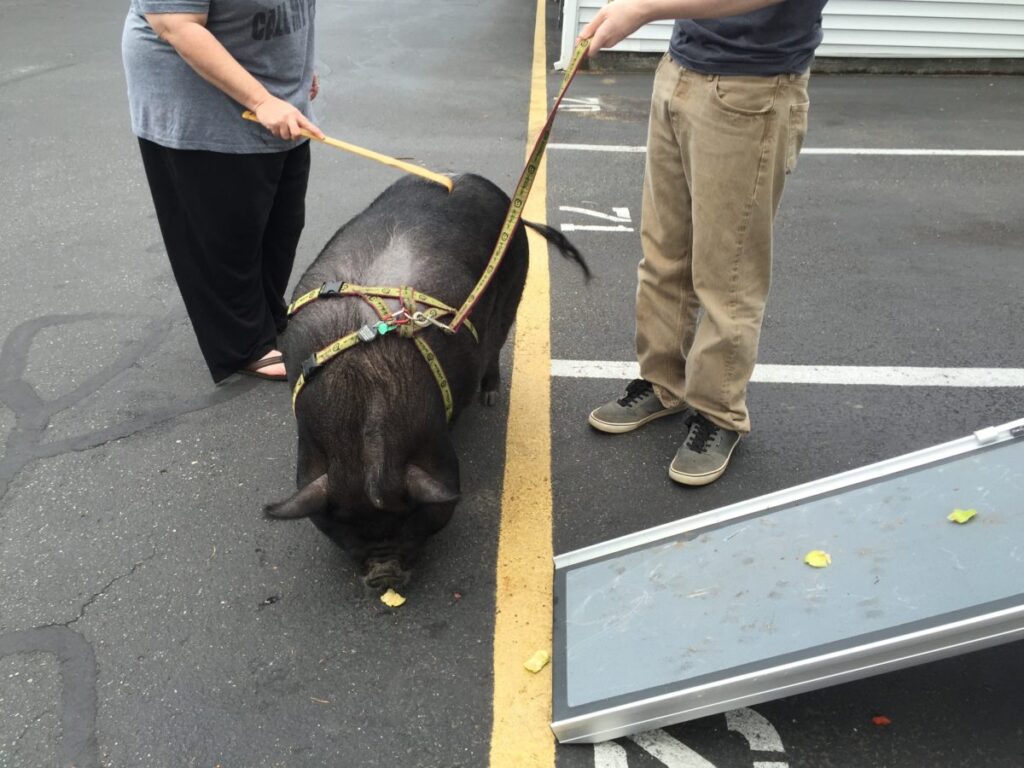
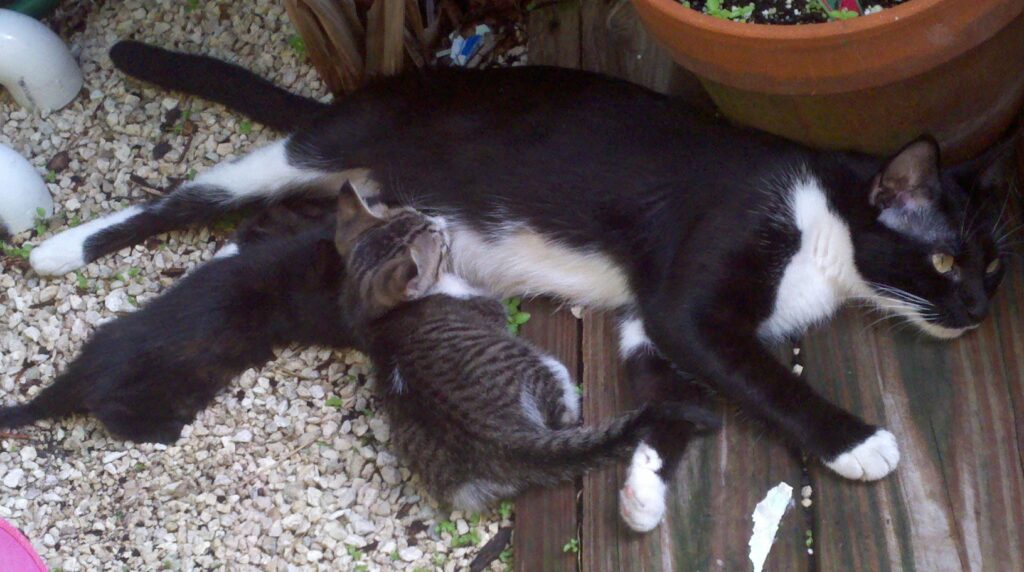
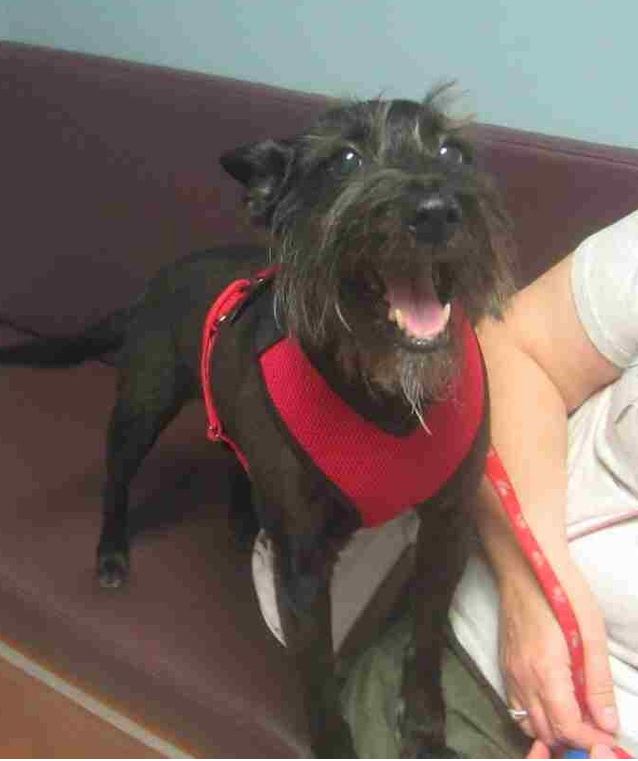
 owner told us that his previous clinic had to muzzle him, and he was handled somewhat roughly. She wanted to get away from that. On his first visit we just got a feel for his comfort level. He barked and growled at us in the room but took treats willingly. He allowed an otoscopic exam but was tense, and when the stethoscope was introduced, he actively tried to bite. Approaching him with a muzzle sent him into a panic. We sent some Trazodone home with him that day for future visits and discussed doing a set of behavioral visits to help desensitize him to handling and instruments.
owner told us that his previous clinic had to muzzle him, and he was handled somewhat roughly. She wanted to get away from that. On his first visit we just got a feel for his comfort level. He barked and growled at us in the room but took treats willingly. He allowed an otoscopic exam but was tense, and when the stethoscope was introduced, he actively tried to bite. Approaching him with a muzzle sent him into a panic. We sent some Trazodone home with him that day for future visits and discussed doing a set of behavioral visits to help desensitize him to handling and instruments. able to make her visit less stressful and even a bit enjoyable. Our veterinarian is part of a Fear Free practice (Thank you,
able to make her visit less stressful and even a bit enjoyable. Our veterinarian is part of a Fear Free practice (Thank you,  We were beside ourselves on how to handle taking Roger to the vet. We put him through basic obedience and advanced obedience classes twice to learn manners and how to act appropriately. He has done great in our home and in our families’ homes as we know how to handle his anxiety. In our vet’s office, though, Roger would go crazy as his anxiety shot through the roof from all the smells and people. Thanks to the Fear Free program and team at Frey Pet Hospital, Roger can feel safer and happier
We were beside ourselves on how to handle taking Roger to the vet. We put him through basic obedience and advanced obedience classes twice to learn manners and how to act appropriately. He has done great in our home and in our families’ homes as we know how to handle his anxiety. In our vet’s office, though, Roger would go crazy as his anxiety shot through the roof from all the smells and people. Thanks to the Fear Free program and team at Frey Pet Hospital, Roger can feel safer and happier 